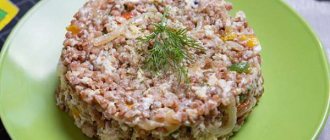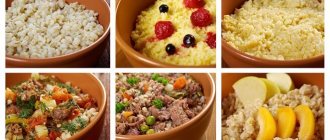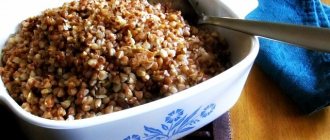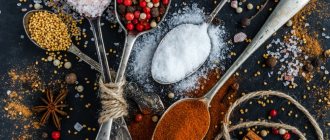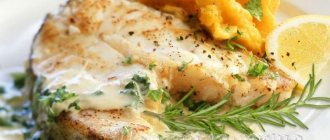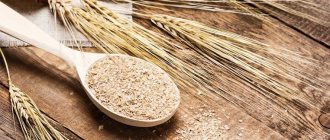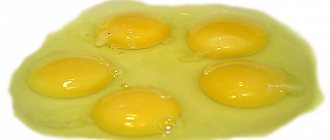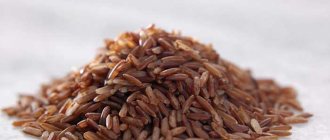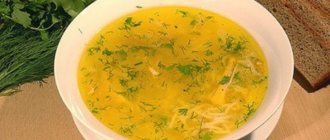After the conquest of America by the conquistadors, a flow of wealth from the New World poured into Europe. Numerous caravans of ships loaded with gold, silver and precious stones carried not only countless treasures. The ships carried in their holds unprecedented birds, animals, and vegetables, berries, nuts and fruits that were strange to European inhabitants.
Today, many plants native to North or South America are cultivated throughout the world. It is difficult to imagine what Europeans used to eat when they did not know potatoes and tomatoes, zucchini and squash, sweet and bitter peppers. Humanity owes its acquaintance with sunflowers and beans, strawberries and cocoa, pumpkins and peanuts to the two American continents.
Corn is the queen of fields
Corn - “golden bread”
Among these plants that have become familiar to us, one of the leading places today is occupied by corn. Bread and cookies made from corn flour, sugar boiled cobs and healthy butter, canned grains and cereals made from corn grits - this is an incomplete list of products that are included in our regular diet. And how can we not remember the delicacies that many people love: corn sticks, cereal and popcorn.
This cereal family crop was the staple food of the Incas, Aztecs, Mayans, Olmecs and other Indian tribes. Its role in the life of the Indians, as in all of American history, is difficult to overestimate. How important this plant was for the indigenous inhabitants of the New World is evidenced by the following fact: one of the most revered gods of the ancient Aztecs was Sinteotl, the god of corn.
Today, corn, along with wheat, rice and soybeans, occupies one of the leading places in the world in terms of sales among grain crops.
The fruits of this plant are widely used in the national cuisine of many countries, and not only in Latin America. Italian polenta, Mexican tortilla, Hutsul banosh, Georgian mchadi and gomi, Romanian and Moldavian hominy - these world-famous dishes are made from corn flour or grits.
They can also be prepared at home and included in your daily diet. And you should start getting acquainted with corn dishes with the most common, but so healthy porridge. It will not do any harm, and the health benefits of corn porridge are beyond doubt. In addition, this dish is low in calories and can be included in your home menu without worrying about your figure.
Useful properties of corn porridge
corn porridge - benefits and harms
Cereals are produced from corn kernels by crushing and grinding. The food industry produces five types of cereals, which differ from each other in the degree of grinding and the size of the grains. Depending on the type of corn from which the cereal is made, it can have a color of varying intensity: from pale to bright yellow. It is believed that to prepare real mamaliga you need a rich yellow grain with an orange tint.
The uniqueness of corn porridge is that the cereal retains all its valuable qualities even after heat treatment. This dish contains a lot of fiber, which stimulates intestinal function. Corn grits significantly inhibit the processes of fermentation and decay in the digestive tract, and remove toxins and decay products from the body.
But this is not the only thing that corn porridge is good for the human body - it is rich in vegetable protein, vitamins A, C, E, PP, group B, magnesium, potassium, zinc, phosphorus, iron and other microelements, and also contains a number of essential amino acids.
In addition, corn is one of those rare food products that contains gold, albeit in microscopic quantities. In addition, dishes made from it are low in calories and help strengthen the immune system.
Calorie content of corn porridge
How many calories are in corn porridge?
For those who are trying to lose weight and stick to a diet, it will be interesting to know what the calorie content of corn is in various types, products made from it, as well as porridge from corn grits. Here is the calorie content in 100 grams of different dishes:
- Raw corn – 86 kcal.
- Boiled cobs – 123 kcal.
- Canned grains – 119 kcal.
- Corn grits – 337 kcal.
- Corn grits porridge with water – 90 kcal.
- Porridge on water with butter and sugar – 141 kcal.
- Corn grits porridge with milk – 186 kcal.
- Milk porridge with pumpkin, sugar and butter – 193 kcal.
- Popcorn – 325 kcal.
- Corn flakes – 363 kcal.
The beneficial properties of corn grits and its rich composition have not gone unnoticed by nutritionists: experts recommend including this porridge in the diet of children, adults, the elderly and pregnant women.
Can it be included in a diet for weight loss?
Undoubtedly, corn porridge is an ideal dietary option for breakfast, lunch and dinner. But we are talking specifically about cooking exclusively with water. Milk and other sweet ingredients will increase calorie content and GI, which will slow down the fat burning process.
You can safely add fresh fruits, vegetables, boiled meat and herbs to this dish. Such a meal will be very appetizing, and most importantly, satisfying. Your body will be saturated with all the vitamins and minerals it needs, which is an integral part of the diet. You will not feel hungry for a long time, and every meal will be pleasant and unlimited. After all, the diet, first of all, should be healthy.
See the recipe for making corn porridge below.
Corn porridge recipes
- On the water
Cooking corn porridge is not very difficult. The cereal must be rinsed from contaminants until the water becomes clear. Coarse grains should first be soaked in water for 3-4 hours.
If porridge is cooked in water, then 3 parts of water are usually used for 1 part of corn grits. Add the cereal to boiling salted water, and when it starts to boil, reduce the heat and cook, stirring occasionally, for an average of 20 minutes. Served with butter.
- In the oven
To prepare corn porridge in the oven, you need to take 2.5 parts hot water and 1 part cereal. Place the ingredients in a heat-resistant bowl, add salt, a little vegetable oil, and, if desired, sugar and pre-soaked dried fruits (raisins, dried apricots, prunes).
Mix everything well, cover with a lid and place in a preheated oven for 20-30 minutes. If you like baked porridge, before cooking, you need to remove the lid and wait for a golden crust to form.
- With milk
You can also cook corn porridge with milk. To prepare it, take ¾ cup of cereal, 2 cups of water and 2 cups of milk. First, the washed cereal should be placed in boiling water and cooked, stirring constantly.
After it has absorbed all the water, you need to pour boiling milk over it, add salt and add sugar or honey if desired. Cook the corn porridge for another 20 minutes until ready, and season with butter before serving.
- In a slow cooker
To prepare corn porridge in a slow cooker, take 1 measuring cup of clean cereal, pouring to the 120 ml mark, 1 liter of cold milk, salt to taste, 4 tablespoons of sugar and 20 grams of butter.
In the evening, all products are placed in the multicooker bowl, mixed, the lid is closed and the “Multicook” mode is set for 1 hour at a temperature of 100 degrees, and after the signal, the porridge is left in the “Warming” mode until the morning.
And for your breakfast, aromatic and healthy corn porridge with milk will be ready. This dish will appeal to those who like porridge with a liquid consistency.
Fully or partially limited products
- pastries, bread, crackers, any sweets;
- animal fats;
- fatty dairy products;
- sweet carbonated drinks;
- sweet fruits;
- vegetables with a high starch content: potatoes, boiled carrots and beets, Jerusalem artichoke, zucchini.
Table of prohibited products
| Proteins, g | Fats, g | Carbohydrates, g | Calories, kcal | |
Vegetables and greens | ||||
| fried potato | 2,8 | 9,5 | 23,4 | 192 |
Fruits | ||||
| figs | 0,7 | 0,2 | 13,7 | 49 |
| persimmon | 0,5 | 0,3 | 15,3 | 66 |
Berries | ||||
| grape | 0,6 | 0,2 | 16,8 | 65 |
Nuts and dried fruits | ||||
| raisin | 2,9 | 0,6 | 66,0 | 264 |
| dates | 2,5 | 0,5 | 69,2 | 274 |
Flour and pasta | ||||
| pasta | 10,4 | 1,1 | 69,7 | 337 |
| pancakes | 6,1 | 12,3 | 26,0 | 233 |
Bakery products | ||||
| buns | 7,2 | 6,2 | 51,0 | 317 |
| wheat bread | 8,1 | 1,0 | 48,8 | 242 |
Confectionery | ||||
| jam | 0,3 | 0,2 | 63,0 | 263 |
| jam | 0,3 | 0,1 | 56,0 | 238 |
| candies | 4,3 | 19,8 | 67,5 | 453 |
| cake | 3,8 | 22,6 | 47,0 | 397 |
| jam | 0,4 | 0,2 | 58,6 | 233 |
| halva | 11,6 | 29,7 | 54,0 | 523 |
Cakes | ||||
| cake | 4,4 | 23,4 | 45,2 | 407 |
Chocolate | ||||
| chocolate | 5,4 | 35,3 | 56,5 | 544 |
Raw materials and seasonings | ||||
| mayonnaise | 2,4 | 67,0 | 3,9 | 627 |
| honey | 0,8 | 0,0 | 81,5 | 329 |
| sugar | 0,0 | 0,0 | 99,7 | 398 |
Dairy | ||||
| cream | 2,8 | 20,0 | 3,7 | 205 |
Meat products | ||||
| fatty pork | 11,4 | 49,3 | 0,0 | 489 |
| salo | 2,4 | 89,0 | 0,0 | 797 |
| bacon | 23,0 | 45,0 | 0,0 | 500 |
Sausages | ||||
| smoked sausage | 28,2 | 27,5 | 0,0 | 360 |
Fish and seafood | ||||
| fried fish | 19,5 | 11,7 | 6,2 | 206 |
Alcoholic drinks | ||||
| white dessert wine 16% | 0,5 | 0,0 | 16,0 | 153 |
| vodka | 0,0 | 0,0 | 0,1 | 235 |
| beer | 0,3 | 0,0 | 4,6 | 42 |
| * data is per 100 g of product | ||||
Corn grits porridge: are there any contraindications?
contraindications for corn porridge
Perhaps the only warning to consuming corn porridge for adults is peptic ulcer of the stomach and duodenum during an exacerbation. Except in cases of individual intolerance to the product, use should be avoided by people suffering from pancreatitis, as well as persons with low body weight and lack of appetite.
Although cereal is a weak allergen, corn porridge can occasionally cause allergies in children. Therefore, it should be included in a child’s diet with caution. This is especially true for complementary foods for infants with cornmeal.
Advantages and disadvantages
| pros | Minuses |
|
|
Some tips for making corn porridge
By following simple recommendations, you can prepare a tasty and healthy dish that both children and adults will certainly enjoy:
- When stored for a long time, corn grits begin to become bitter over time, so you should not store them in large quantities.
- If you see porridge made from steamed corn grains on sale, give preference to it, such porridge will boil faster.
- The cooking time depends on the type of grain: coarse grains take longer to cook, finely ground grains cook faster.
- To reduce the cooking time for large grains, they must first be soaked in water for 3-4 hours.
With milk or water, in a slow cooker, on the stove or in the oven, with sugar, butter, pumpkin or dried fruits, as an independent dish or side dish - corn porridge in any form is good. Try to cook it, and it will take its rightful place in your daily menu.
Tags:
porridge corn benefits and harm products
Menu (Power Mode)
With a mono-diet everything is very clear. The menu for a four-day diet with eating the main course of the diet 2 to 4 times on different days looks like this:
| Breakfast |
|
| Lunch |
|
| Dinner |
|
| Afternoon snack |
|
| Dinner |
|
| Breakfast |
|
| Lunch |
|
| Dinner |
|
| Afternoon snack |
|
| Dinner |
|
| Breakfast |
|
| Lunch |
|
| Dinner |
|
| Afternoon snack |
|
| Dinner |
|
| Breakfast |
|
| Lunch |
|
| Dinner |
|
| Afternoon snack |
|
| Dinner |
|
